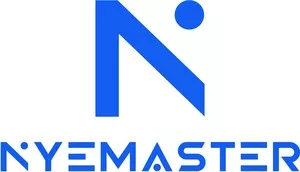- within Intellectual Property topic(s)
- in European Union
- within Cannabis & Hemp topic(s)
- with readers working within the Banking & Credit, Basic Industries and Insurance industries
For startups, intellectual property (IP) is often the most valuable asset and also the most overlooked. Early missteps in protecting IP can lead to disputes, missed funding opportunities, or even loss of rights in core assets.
The fifth article in Legal Basics for Startups: A Practical Series for Founders introduces the basics of startup IP protection. It highlights what to protect, when to act, and how to avoid common mistakes.
Establish IP Ownership from Day One
Many startups begin operating before formalizing IP ownership. A developer might write code on a personal laptop. A cofounder might use equipment or materials from a previous employer. Contractors may contribute materials or ideas without a written agreement. These scenarios are common and risky.
Ownership of IP assets may be unclear if the IP is created before the legal entity is formed or by people not formally engaged by the startup. It is not enough to assume that founders or close advisors are "on board." Without signed documents, legal uncertainty exists. Legal uncertainty is often a problem for investors.
As a best practice, founders should ensure that all IP created for the business, regardless of who developed it, is expressly assigned to the company and documented early in the company's formation. This typically requires executing IP assignment agreements or including clear assignment provisions in employment and contractor agreements.
Founders also should have employees, contractors, advisors, and early collaborators sign nondisclosure agreements to protect confidential information during discussions with developers, potential partners, and new hires.
Protect Trademarks, Copyrights, Patents, and Trade Secrets
Not all IP is protected the same way. The right approach depends on the asset and the startup's goals.
Trademarks protect the brand. They cover names, logos, the look of the product or its packaging, and slogans that identify the business in the market. While common law trademark protection may arise from use of the mark in commerce without registration, obtaining a federal trademark registration strengthens the startup's rights and helps prevent others from using confusingly similar marks.
Copyrights protect original works of authorship fixed in a tangible medium, including software code, written content, graphics, marketing materials, and product documentation. Protection arises automatically when the work is created and fixed, but registration strengthens enforcement. It can unlock statutory damages and attorneys' fees. Copyright protects the expression of an idea, not the idea or function itself. Names and slogans generally fall under the trademark umbrella, and functional features are typically addressed by patent law.
Patents protect inventions, such as new products, processes, and ornamental designs. Utility patents last for 20 years from the nonprovisional filing date. Design patents last 15 years from the date they are granted. A provisional patent application can be an inexpensive way to establish a priority date with the U.S. Patent Office. It lasts 12 months but must be followed by a nonprovisional application. It is often best to file a patent application before the startup has any sales, offers for sale, or other public disclosures of the invention. In most countries, patent applications must be filed before any commercialization or public disclosure of the invention. In the United States, there is an up-to-one-year grace period. Once a patent expires, the invention enters the public domain.
Trade secrets protect valuable business information, such as formulas, customer lists, data, source code, or internal methods. The owner must take reasonable steps to maintain the secrecy of the information. Unlike patents and trademarks, trade secrets do not require registration and can last indefinitely, but they offer no protection against reverse engineering or independent discovery.
In short, patents offer time-limited protection in exchange for public disclosure. Trade secrets offer indefinite protection, but only if secrecy is preserved.
Startups do not need to protect everything in every way, but they do need a deliberate strategy that supports their market position. For consumer-facing brands, it can be beneficial to conduct trademark clearance searches before adoption and filing to reduce conflict and strengthen rights. For novel products and processes, patent clearance searches should be conducted, and where appropriate, applications should be filed to build a competitive advantage. A strong brand may call for a trademark registration. A novel process might warrant a utility patent. Sensitive information that cannot be easily reverse-engineered might be best safeguarded as a trade secret.
Build a Strong, Protectable Brand
Branding is more than a name; it is part of the startup's value. The brand develops goodwill over time as consumers associate it with the value, quality, and reputation of the business' products or services. Brands that are too generic, too descriptive, or too close to existing marks can become liabilities. This is especially true when founders commit to a brand before checking whether it can actually be protected.
About 10 years ago, I advised a new business that launched as A1 Motorcycles. They had already invested in a graphic designer, uniforms, signage, and marketing built around that identity. When the founders tried to protect the name, it was not possible. The term "motorcycles" was too generic, and "A1" was already associated with a well-known premium German car model. To make matters worse, part of their logo closely resembled the car model's logo. While it was unlikely a global automaker would take action against a small local shop, the exposure was real.
In the context of a venture-backed startup, this kind of misstep could derail an entire deal. When branding is a key asset, investors often look for brands to be:
- Distinctive
- Protectable
- Clearly owned
Conducting a basic trademark clearance search before committing to a brand is highly recommended. Rebranding later can disrupt operations and damage credibility. Registering a website domain or a company name with a secretary of state does not necessarily provide the right to use a trademark.
Audit and Fix Early IP Gaps
Before talking to investors, startups should audit their IP position. They should confirm that:
- All contributors have signed assignment agreements.
- Core code or materials are stored in the company's systems with clear authorship and dates.
- No public disclosures have jeopardized patent eligibility.
- Patent searches have been conducted to help ensure freedom to operate, and applications have been filed on novel inventions.
- Brand assets have been cleared and, if appropriate, trademark applications have been filed.
Fixing these gaps is easier when caught early. Founders who wait until diligence begins may face delays, or worse, lose credibility and IP rights. A well-documented IP strategy signals to investors that the startup is built on solid legal foundations.
Secure What You Build
Startups move fast, but IP cannot be an afterthought. Founders do not need to file patent or trademark applications on day one, but they must understand what they own, what needs protection, and how to secure it.
The content of this article is intended to provide a general guide to the subject matter. Specialist advice should be sought about your specific circumstances.


